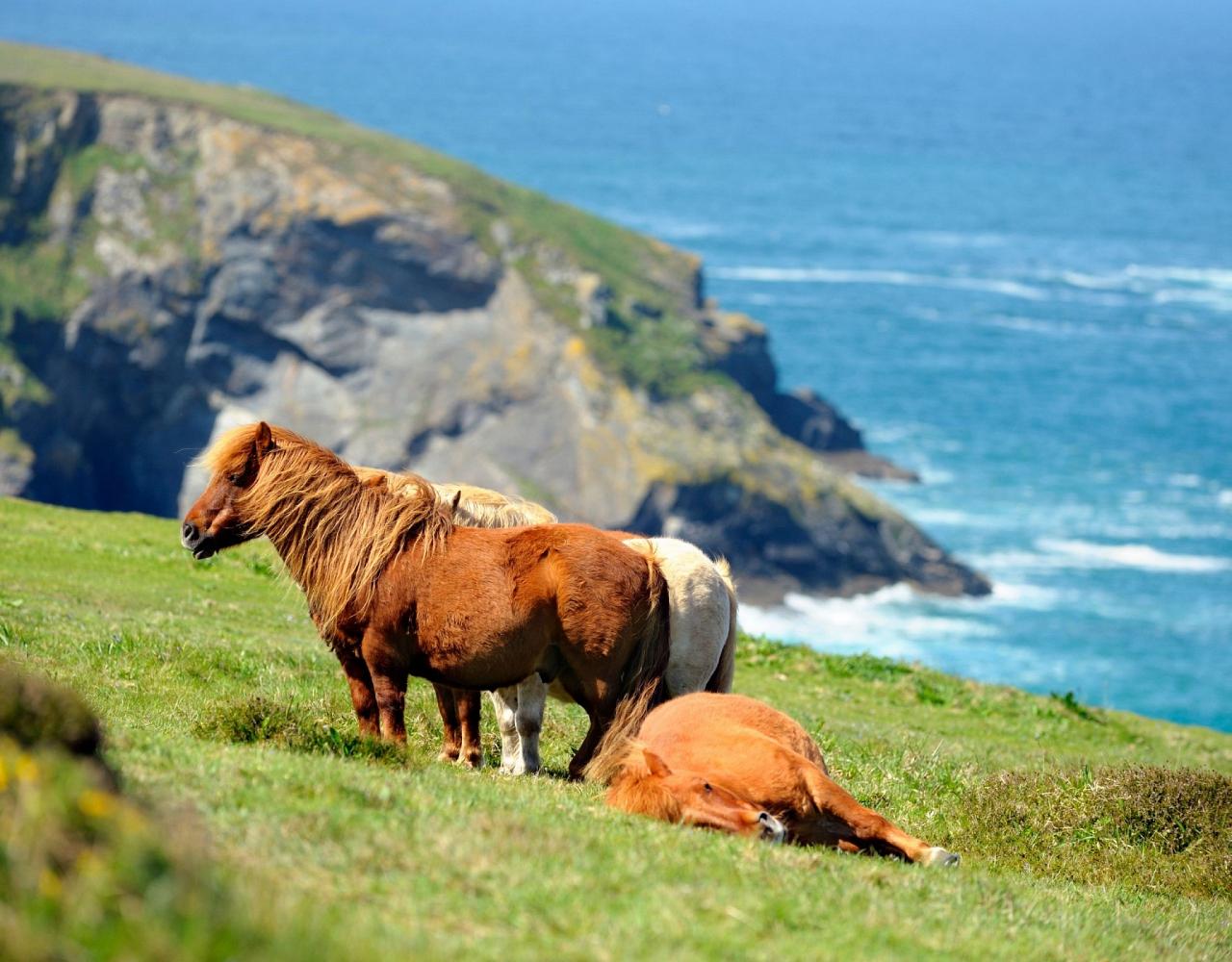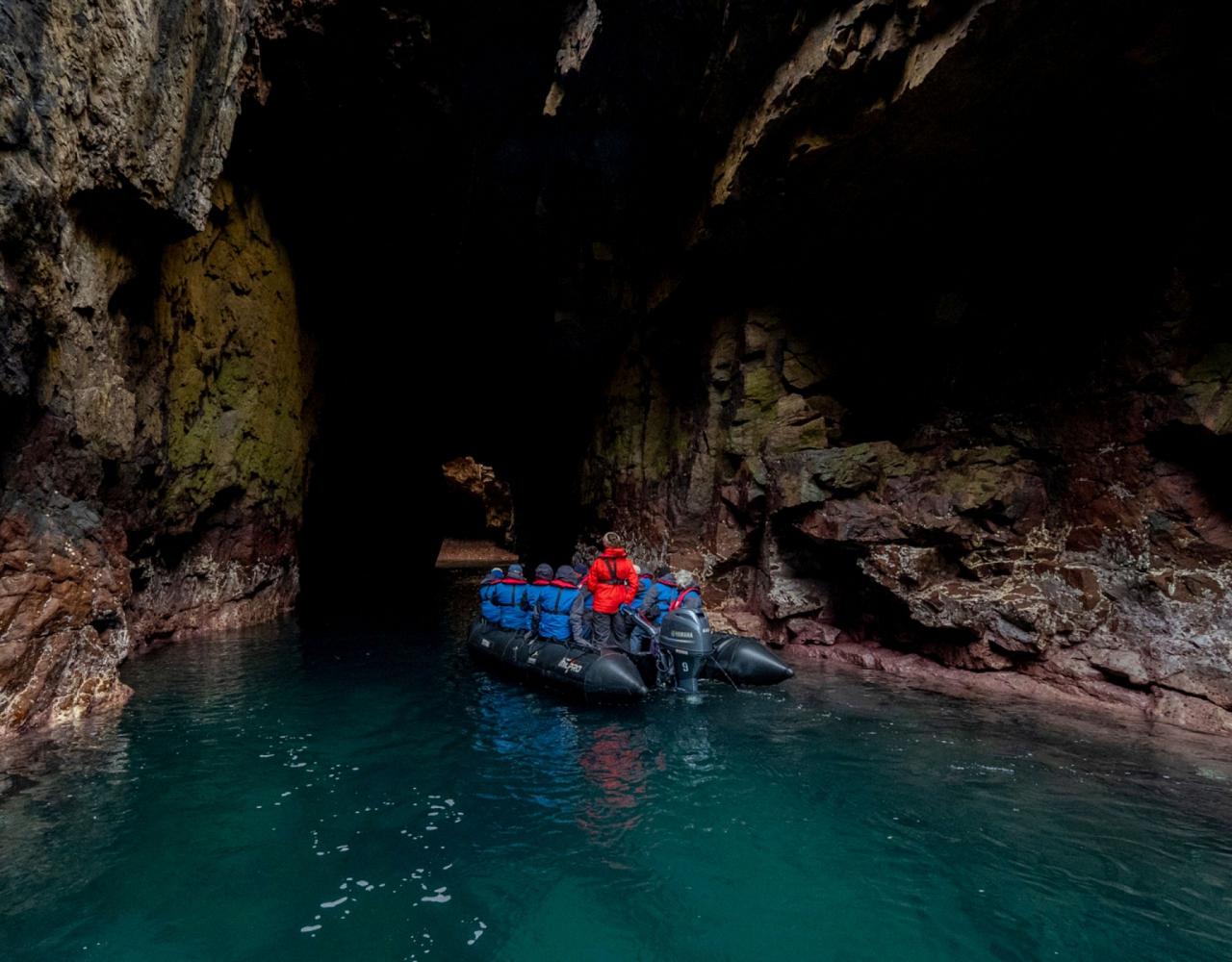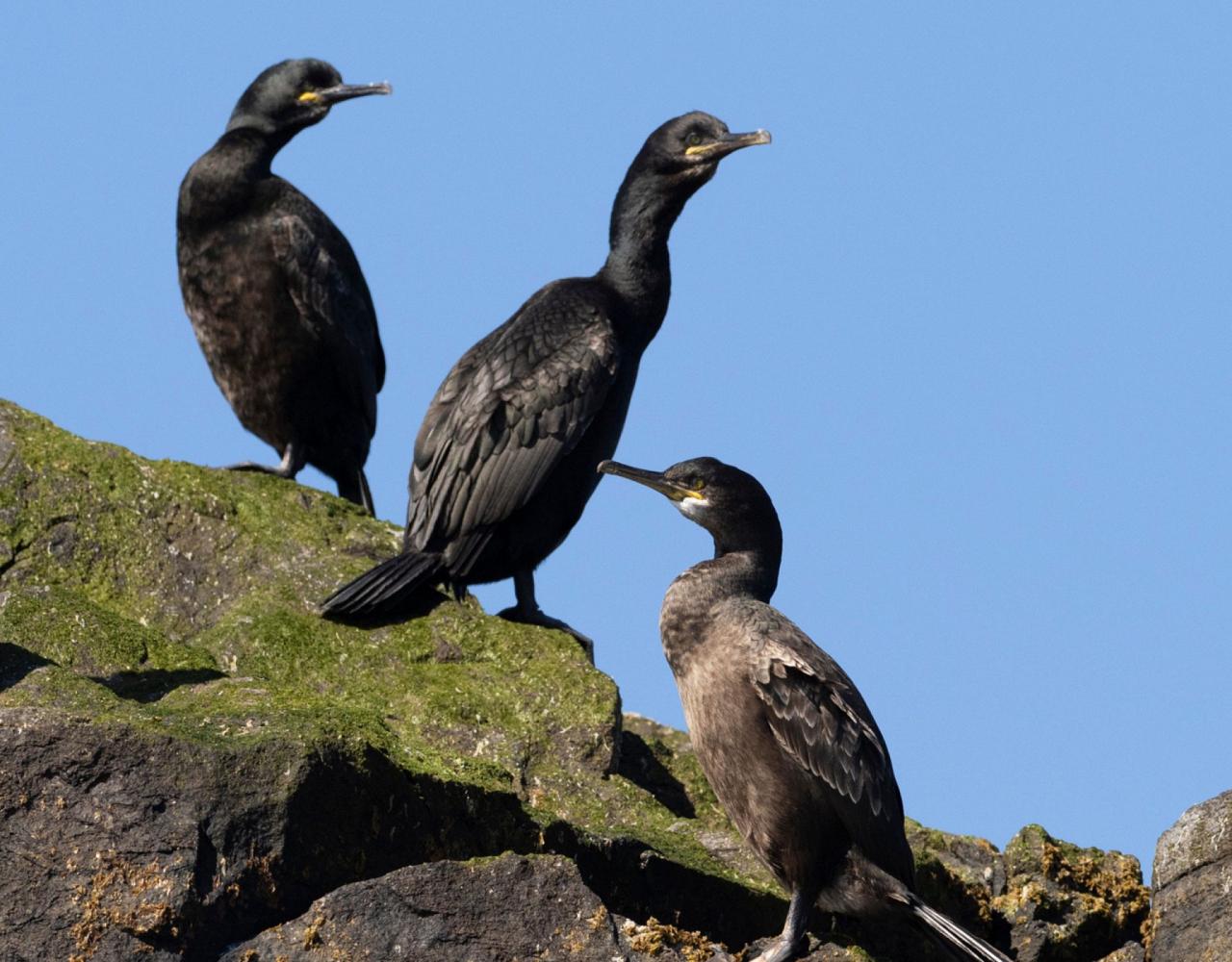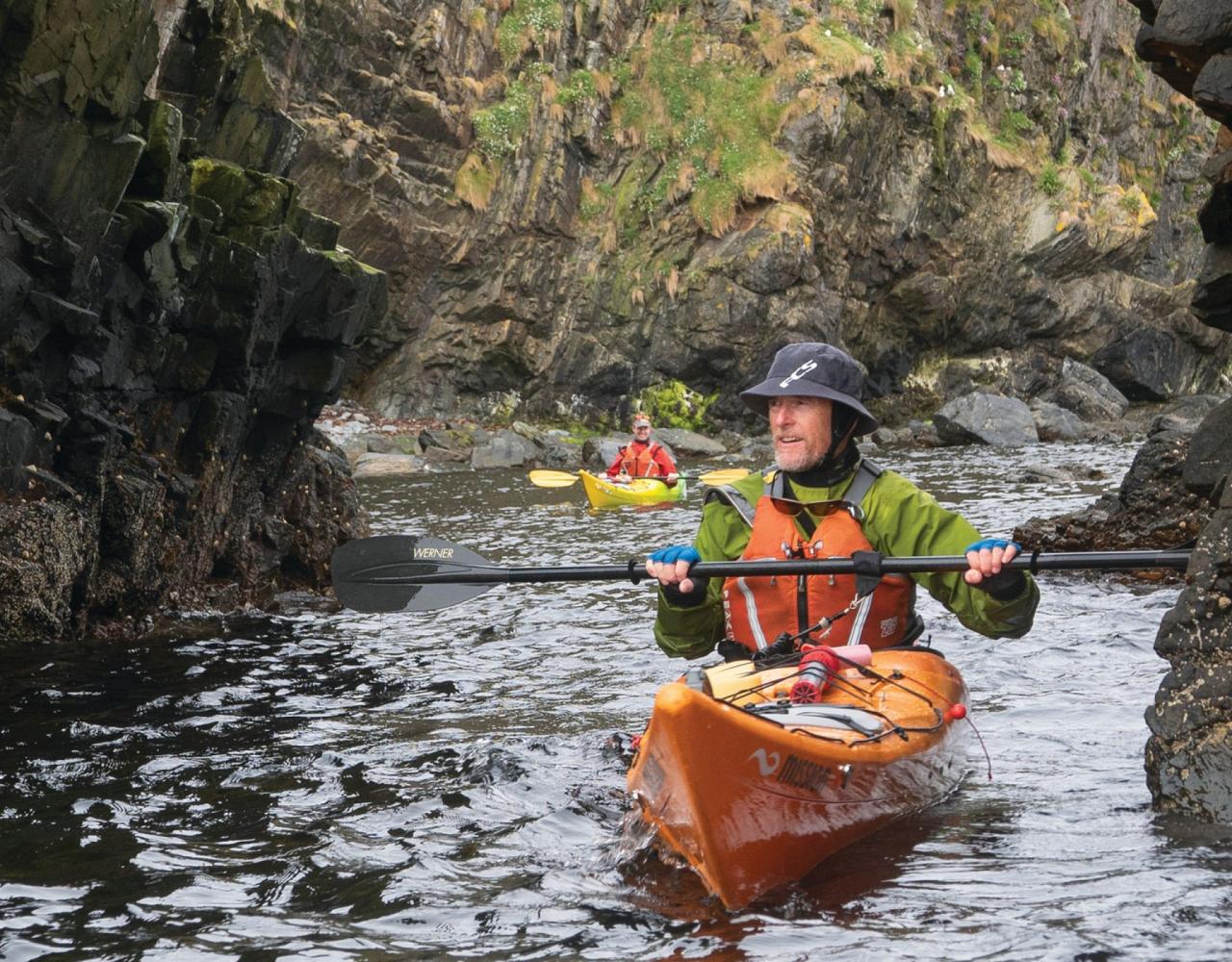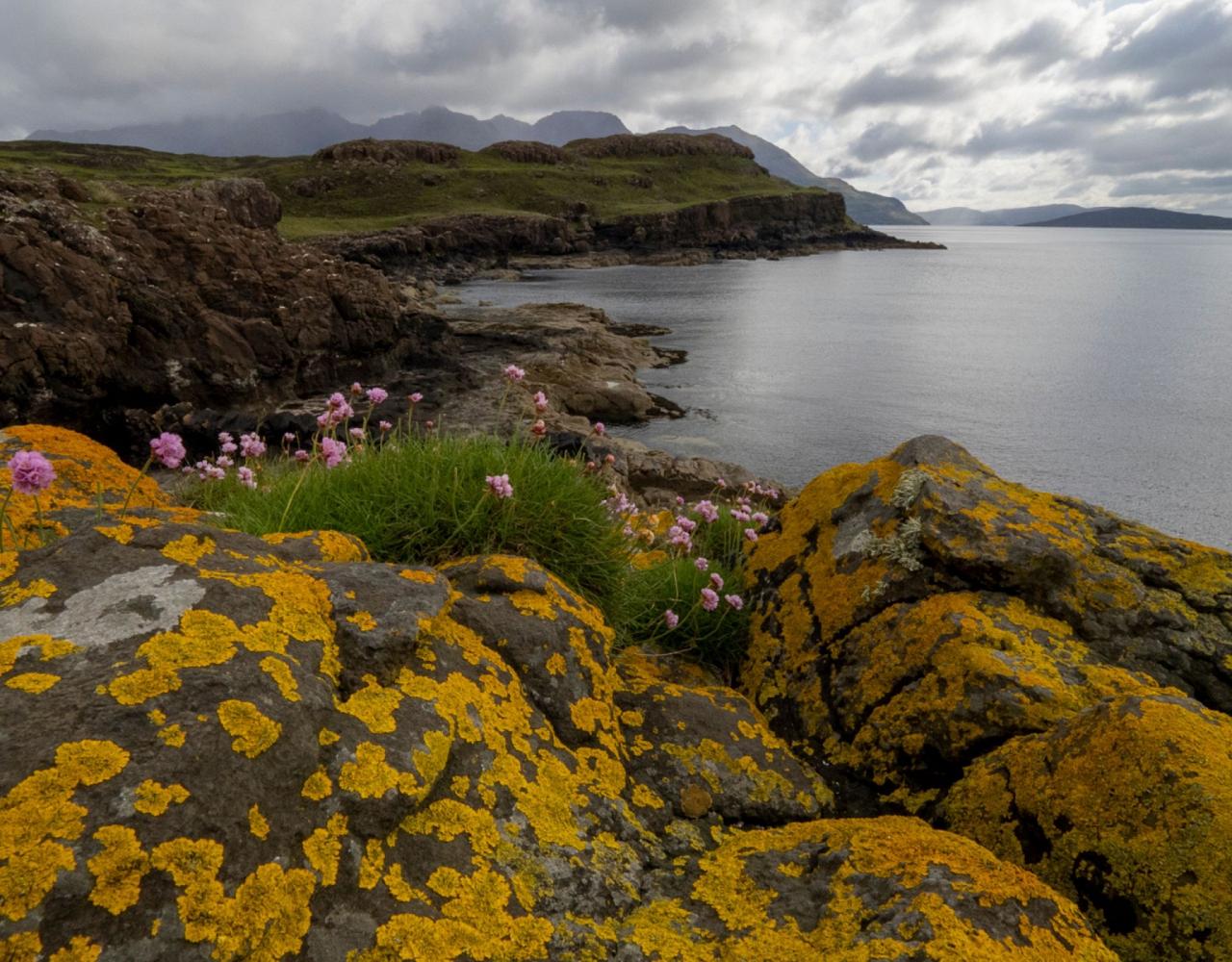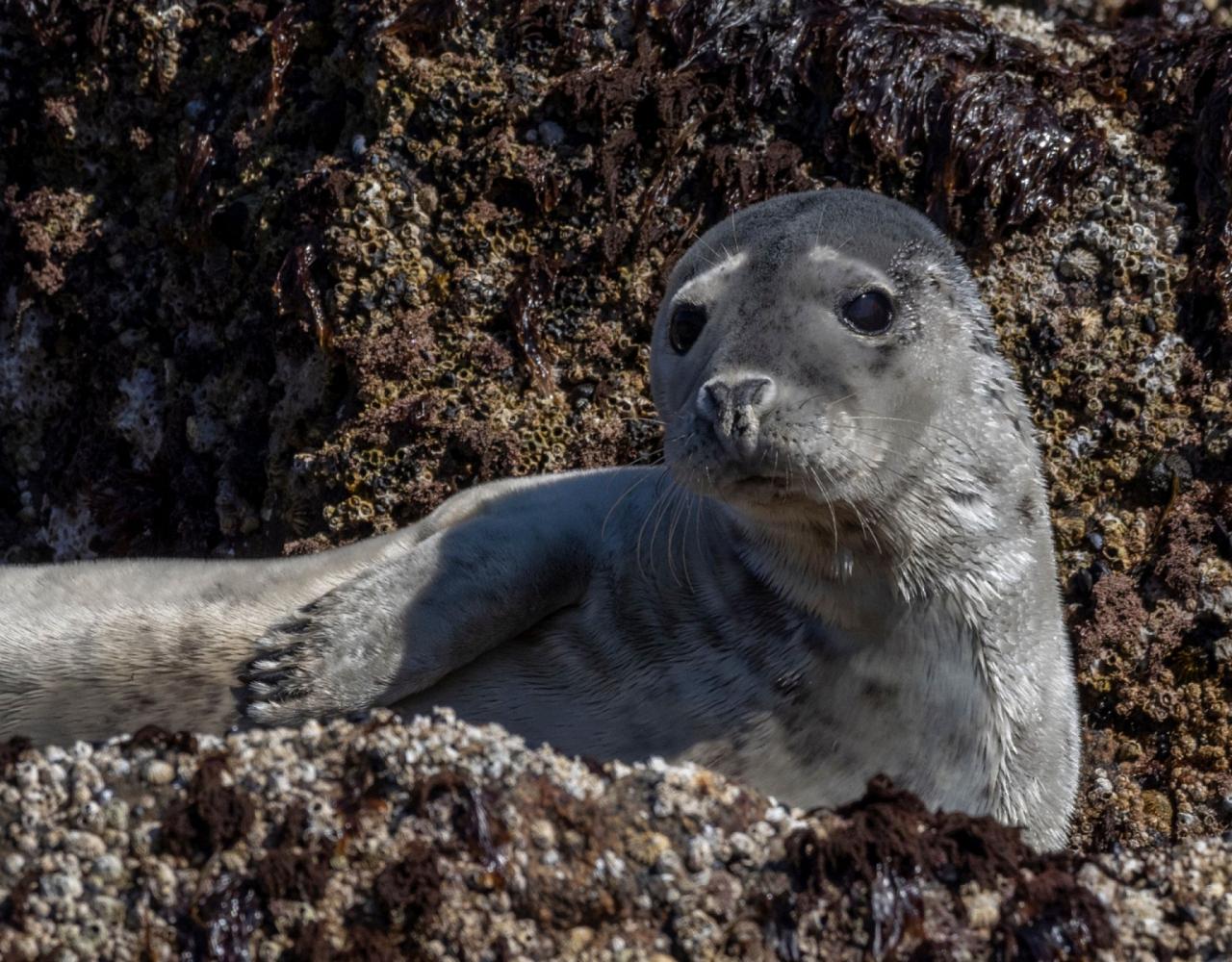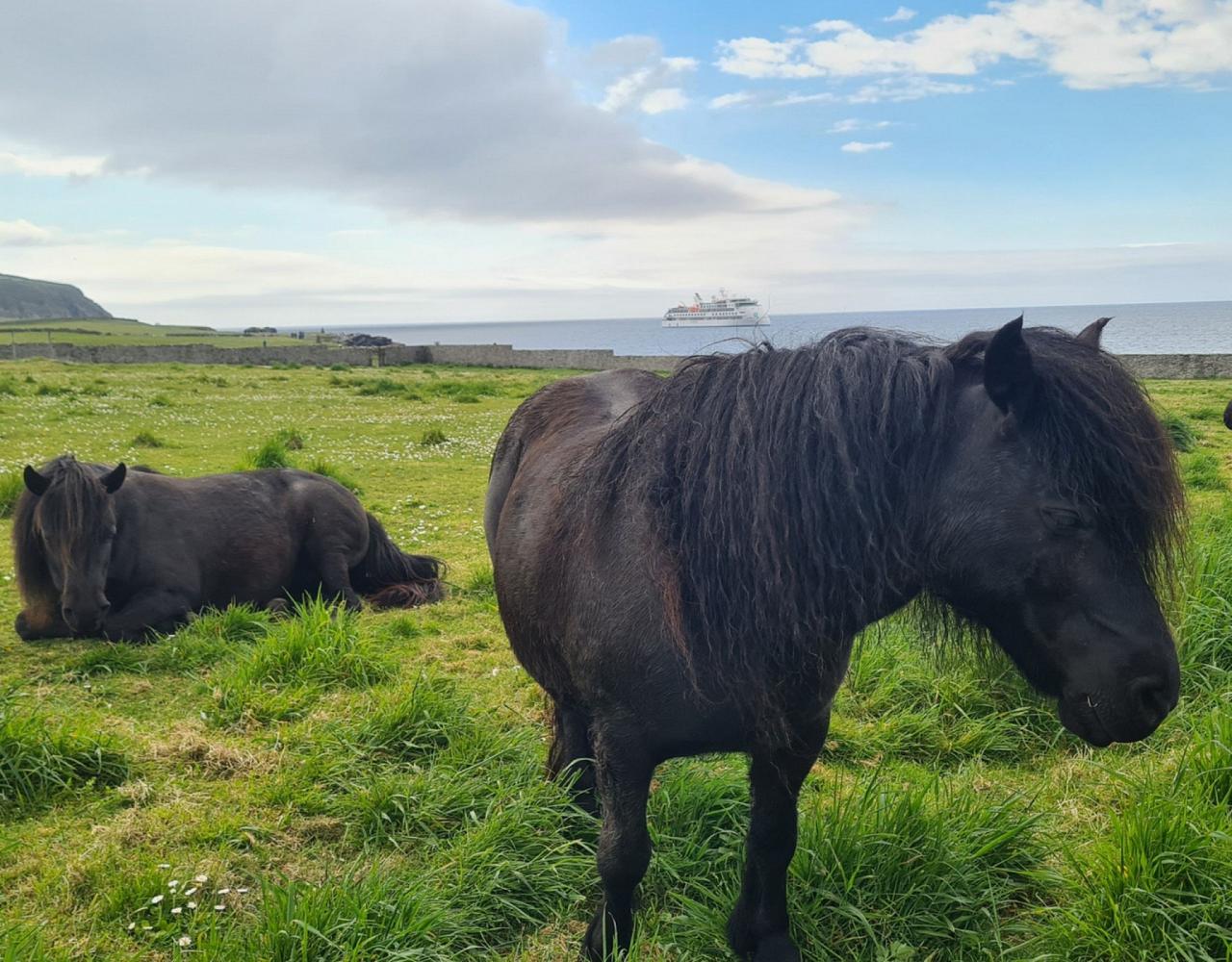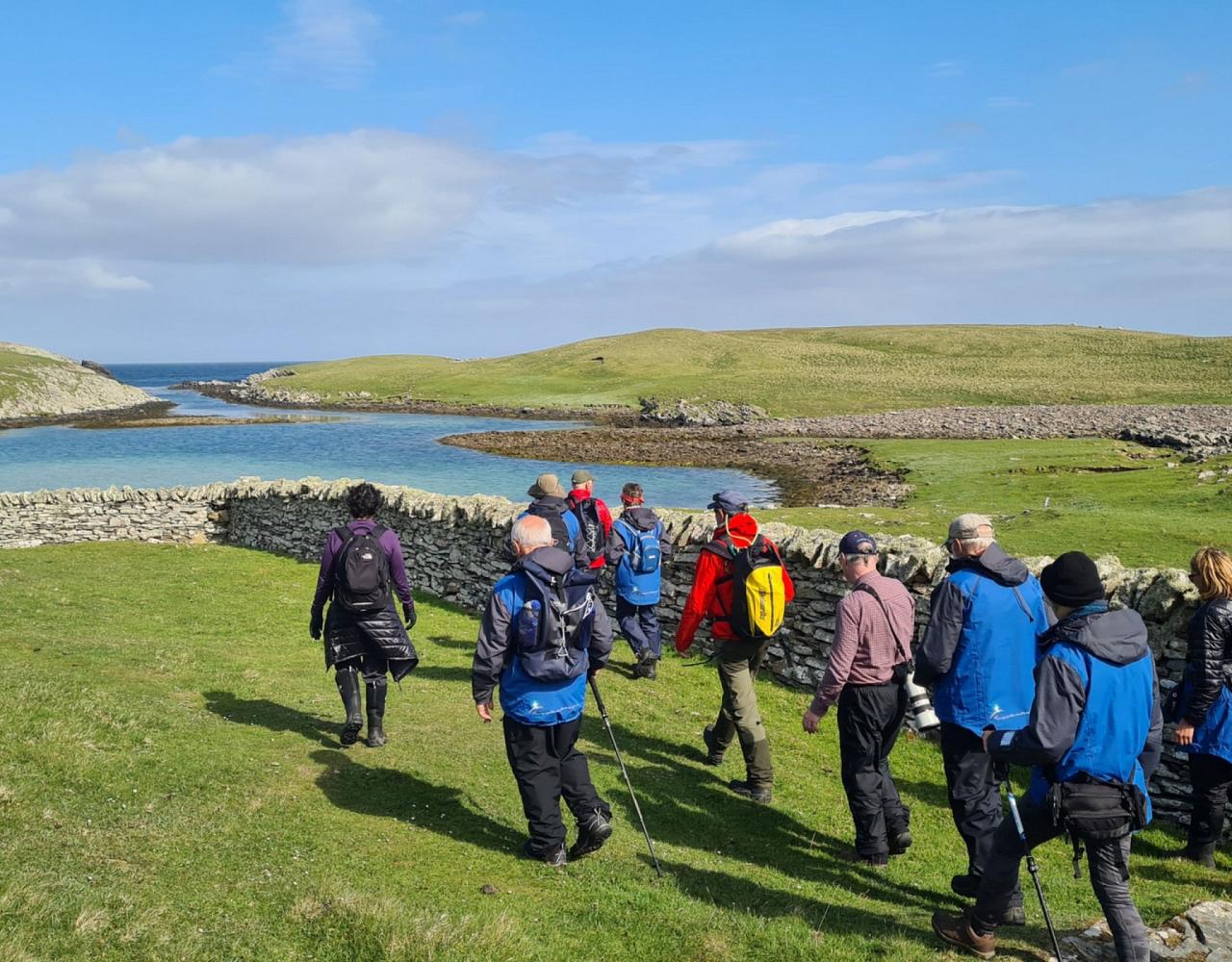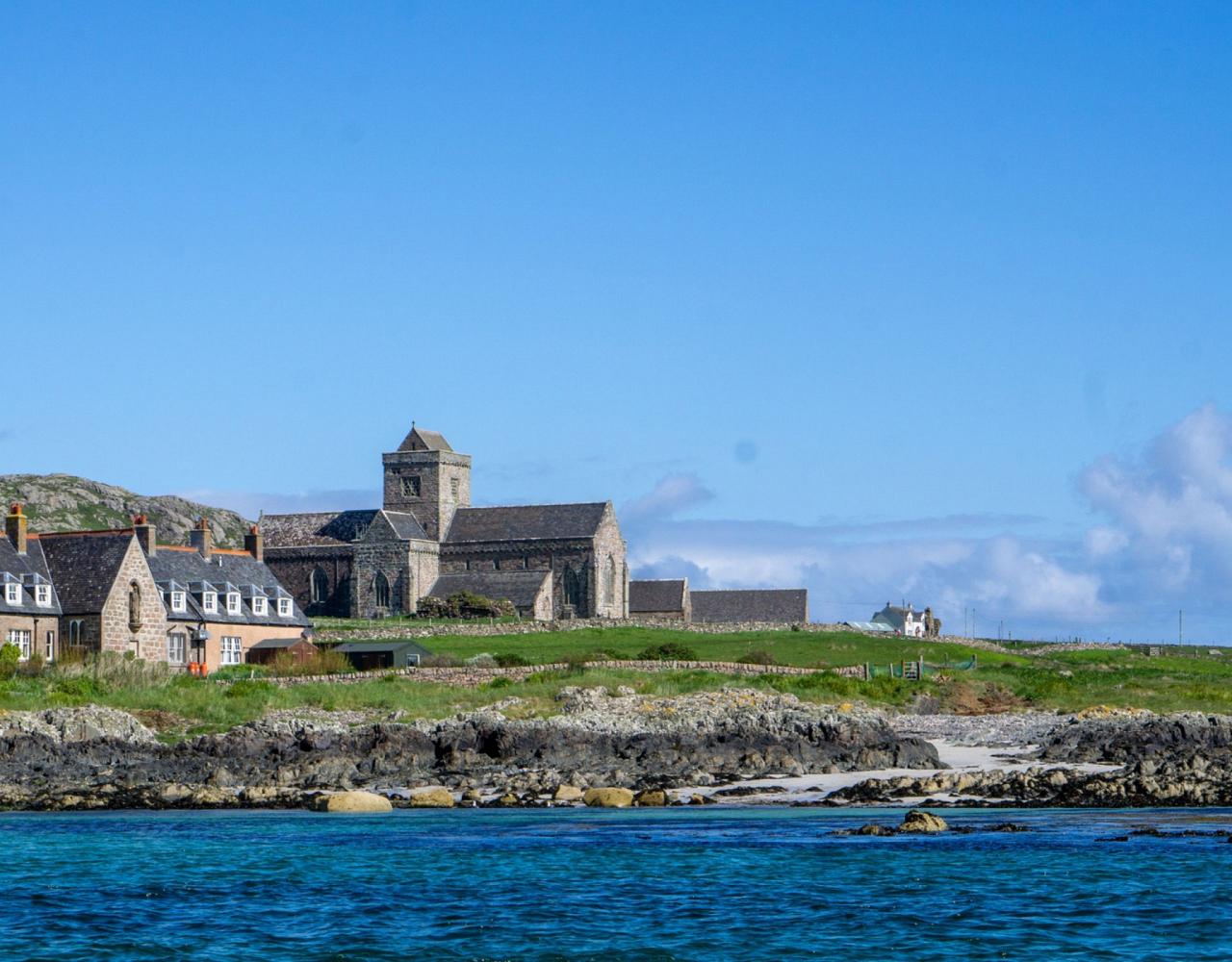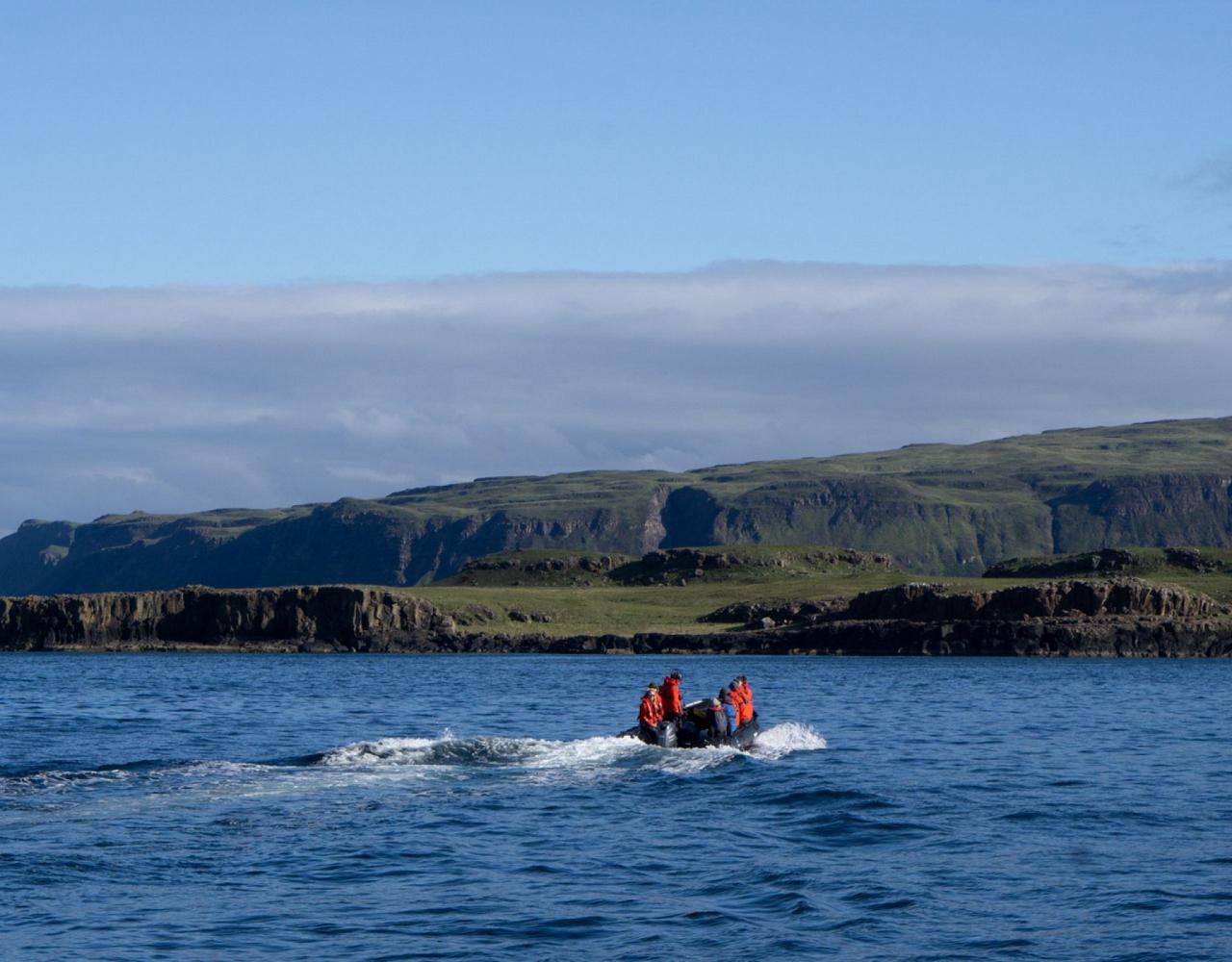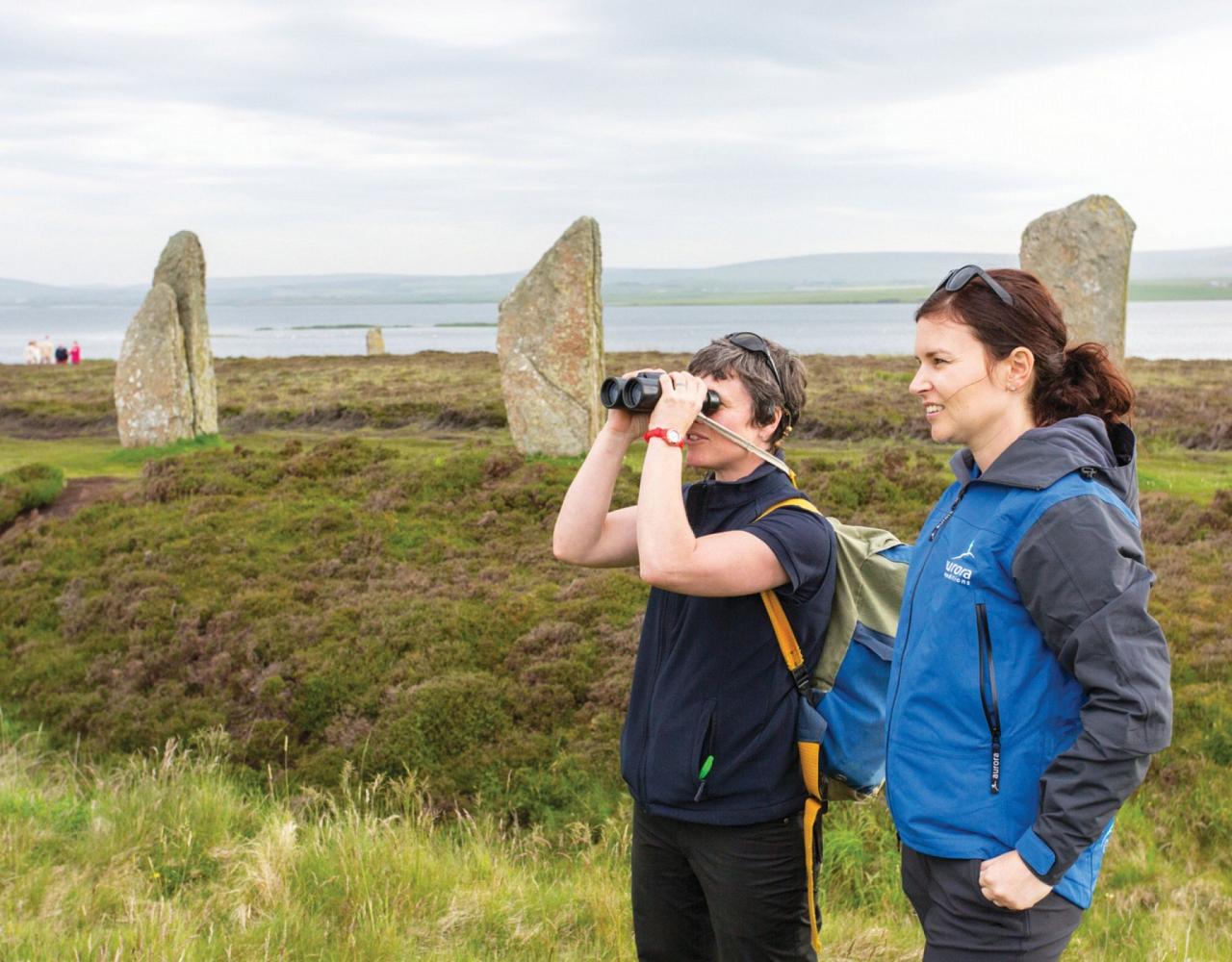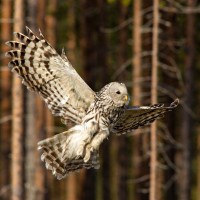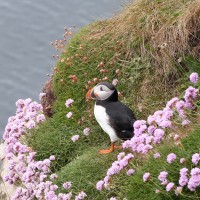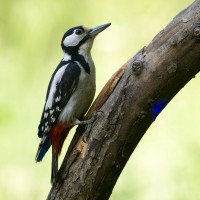- Overview
- Full Itinerary
- Photo Gallery
- Costing
- Travel Details
- Trip Reports
- Guide
- Map
- Know Before You Go
- Other Trips You May Like
Join Naturalist Journeys in Scotland for a fascinating cruise into the Scottish Islands. Scotland offers a rich tapestry of history, culture, and beauty. We begin in Edinburgh with a city tour and time to explore, eat, and drink on your own before we embark and set sail into the wilds. Each day we explore off the ship in the company of expert guides, cruising in Zodiacs and enjoying walks on shore.
On the route we explore the Inner and Outer Hebrides, the Shetland Islands, and The Orkney Islands, soaking in time to observe massive seabird colonies, watching for marine mammals, and learning about the fascinating history, archeology, and culture of the islands. North Atlantic cruise is not to be missed!
This cruise is fantastic for friends and couples who have a variety of interests—wildlife abounds, as does history, archaeology, and good food. Bring your friends and enjoy this fun Scottish Islands cruise.
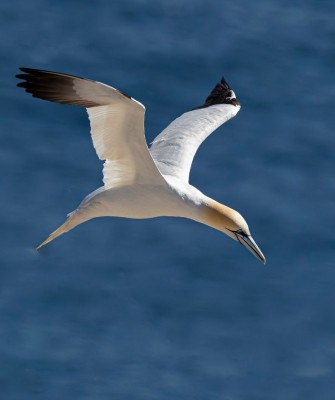
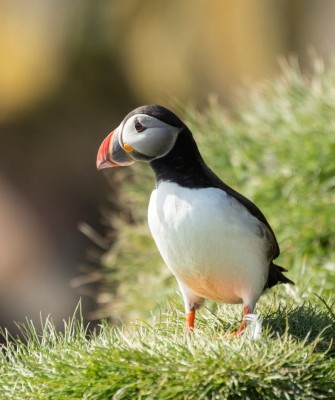
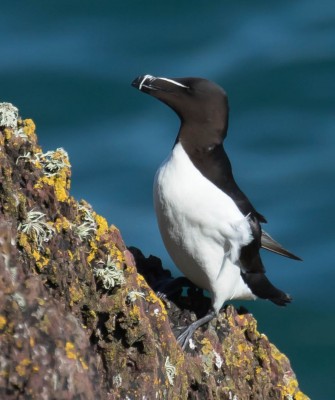
Tour Highlights
- Arrive in Edinburgh with time to explore the city
- Spend two days exploring the golden beaches, jagged peaks, bleak moors, and heathered hills of the Inner Hebrides
- Take three days to discover the Outer Hebrides, home to fascinating archeological sites and the largest seabird colonies in the world
- Island-hop around the Shetland Islands to soak in the wilds and wildlife and visit the northern-most point of Britain at Muckle Flugga
- Enjoy two days on the Orkney Islands; Fair Isle lies on the intersection of major flight-paths from Scandinavia, Iceland, and Faroe—June boasts fantastic birding!
Trip Itinerary
Itineraries are guidelines; variations in itinerary may occur to account for weather, road conditions, closures, etc. and to maximize your experience.
Mon., May 27 : Edinburgh
Welcome to Scotland! You are met by a representative of our cruise operator and transferred to our group hotel. Upon arrival, please visit the cruise company’s hospitality desk to collect your luggage cabin tags and to speak with their ground operations team, who share pre-embarkation information and ideas about where to dine, withdraw cash or purchase last minute items from a local pharmacy or supermarket.
The remainder of your time is at leisure today.
Accommodation at Courtyard Edinburgh Hotel (or similar)
Tues., May 28 : Edinburgh | Troon, West Scotland
Edinburgh awaits us this morning as our local guide welcomes us with stories of Scotland's capital city. Stretching just over one mile, five cobblestoned streets make up the walking precinct of the Royal Mile. Starting at The Palace of Holyroodhouse, the official residence of the British monarch in Scotland, we step back in time to hear tales of princes, poets, and politicians as we stroll past some of Edinburgh’s most iconic buildings including the Church of Canongate and Scotland's own parliament house.
Perched atop an extinct volcano, Edinburgh Castle dominates the capital city’s skyline just as it has dominated Scotland’s long and colorful history. This instantly recognizable fortress is a powerful national symbol, and part of Edinburgh’s World Heritage Site. Our audio tour brings the castle’s inhabitants alive as you discover highlights such as the Royal Palace, the Crown Jewels, Mons Meg, and the Scottish National War Memorial.
We have time to explore the castle precinct and Royal Mile which are scattered with friendly pubs and charismatic restaurants. Our two-hour transfer takes us to the west coast port of Troon where our expedition team welcomes us aboard the Greg Mortimer in the late afternoon.
Once onboard, settle into your cabin before our important briefings. We set sail along Scotland's northwest coast in the evening and meet your expedition team and crew at Captain’s Welcome Dinner. (D)
Wed., May 29 & Thurs., May 30 : Inner Hebrides
From golden beaches to jagged peaks, bleak moors and heather clad hills; from abandoned settlements to picturesque villages, our days in the Hebrides archipelago are packed with variety. We may explore remote lochs beneath some of Britain’s most untamed mountains and wander between unusual rock formations. We may watch for Pilot and Minke Whales, Harbour Porpoise, Bottle-Nosed, White-Beaked, and Striped Dolphins, Eurasian Otter, Scottish Common Seal and Grey Seal, and the increasingly rare Basking Shark. Possibly we land at an island reserve that is home to Red Deer and White-tailed Eagle. We also keep our eyes peeled for eiders and Long-tailed Duck, as well as Red-throated, Black-throated and Great-Northern Divers. Shorebirds include anderling, Dunlin, Ringed Plover, Ruddy Turnstone, Purple Sandpiper, Redshank, beautiful Eurasian Oystercatcher, and Curlew.
Kayakers are introduced to their craft briefed for their adventures before picking up paddles to circumnavigate tiny islets or glide into narrow waterways that intertwine the islands. Hikers may opt for panoramic views from summits and ridges.
Early the second morning we aim for the tiny island of Iona. Barely 3 miles long, Iona is renowned as the birthplace of Christianity in Britain. It is also a burial ground of early Scottish Kings. The Irish monk, St. Columba and twelve disciples, landed here and founded a monastery in 563 CE. From this base, St. Columba set about converting Scotland and much of Northern England to Christianity.
On Staffa, we hope to have the chance to explore Fingal’s Cave, where the melodious sound of waves crashing against towering basalt pillars inspired Mendelssohnn’s Hebridean Overture. We may enter the cave in Zodiacs, or clamber ashore to walk into the mouth of the cave. We scan for the few Great Skua that sometimes breed here. Guillemot, Razorbill, Kittiwake, and Shag are present, with Black Guillemot, Manx Shearwater, and perhaps tiny Storm Petrel, Great Skua, Arctic Tern and “real” Greylag Goose offshore. On shore we find Atlantic Puffin in abundance.
The rugged Isle of Skye, named after the Norse word for ‘cloud’, is a hikers’ paradise. It is a centre of Gaelic culture and some islanders still speak the language. The wildlife, history, geology and beautiful scenery make it one of our favorite islands to explore. We hope to make the following landings: The Cuillin Hills have earned a reputation as Britain’s most untamed and challenging mountains. The rocky jagged Black Cuillins attract rock climbers. The smoother conical granite peaks of the Red Cuillins are crowned with heather. We may land at Loch Scavaig in the heart of the Cuillins and take a short hike, perhaps to Loch Coruisk, for spectacular views and get a glimpse of the range’s grandeur. Keener hikers may be able to venture further afield, weather permitting. Meanwhile kayakers can paddle around Loch Scavaig, into Loch Coruisk. They may even have the chance to explore the island of Soay and an abandoned shark fishing station—all against the backdrop of classic views of the Cuillins.
To the south of the Cuillin Hills we may visit Rubha’ an Dùnain, a small uninhabited peninsula on the southwest corner of Skye, commanding an impressive view of the sea routes nearby. As a result of its strategic position we can see archaeological remains—from a Neolithic chambered cairn, to a Viking canal and more recent black houses. Depending on weather conditions, we may choose to visit the small island of Canna in search of rare Basking Shark, seals, and seabird nesting cliffs. (B,L,D)
Fri., May 31 – Sun., June 2 : Outer Hebrides
From the Inner Hebrides we make our way to the Outer Hebrides, also known as the Western Isles, that stretch for nearly 130 miles and look out on their western side to the Atlantic Ocean. Our first stop is at the Isle of Lewis, the largest and northern-most island in the Outer Hebrides. We plan to make a stop at Callanais, where archaeology buffs are keen to see the fascinating group of Standing Stones, dating from around 3,000 BCE. Nearby we may visit Bostadh House, a remarkable reconstruction of an Iron Age dwelling tucked away just above a beautiful white beach.
Weather permitting we plan to land at the isolated archipelago (and World Heritage site) of St. Kilda, where derelict crofts bear testament to the fortitude of islanders who once tended the unique Soay sheep and harvested seabirds for food—and to pay their rent in the form of wool, meat, and feathers. The isles hold Europe’s most important seabird colony, home to 60,000 pairs of Northern Gannet and 64,000 pairs of Northern Fulmar, and is home to Britain’s highest sea stacks. Huge colonies of Atlantic Puffin, guillemots, and Razorbills can also be found, as well as breeding Storm Petrel, shag, cormorant, Black Guillemot, kittiwakes, Great Skua, Arctic Skua, Arctic Tern, Common Tern, and Little Tern. Impressive! Island hopping northeast, we aim to visit tiny specks of land that bear the brunt of violent Atlantic storms and rarely see visitors. Home to breeding seals, Sula Sgeir, North Rona, and Flannan boast spectacular cliffs, fantastic rock stacks, hidden beaches, and luxuriant heaths where sheep once grazed. (B,L,D)
Mon., June 3 & Tues., June 4 : Shetland Islands
Britain’s most northerly islands lie almost 100 miles north of the Scottish mainland, at a similar latitude to the southern tip of Greenland, or Bergen in Norway. Kept relatively warm by the Gulf Stream, Shetland’s 100 islands experience almost 24 hours of daylight in summer. They abound with nature reserves and archaeological sites and offer a taste of traditional island life. We plan to explore some of the following sites:
The island of Foula is the most remote inhabited island in the UK. Its small community of about 30 residents welcome us to their island to enjoy the magnificent scenery, large seabird colonies, beautiful wildflowers, and remarkable community life. We look for Western Marsh Harrier, striking Gray Wagtail, darling Common Quail, Eastern Subalpine Warbler, Bluethroat, and possibly even Black Redstart. Papa Stour offers some of the best sea caves in Britain where we may explore with Zodiacs and kayaks.
Jarlshof is one of Shetland's best preserved and most complex archaeological sites. It was exposed by storms in the late 19th Century. The Old House of Sumburgh, built here in the 17th Century, was named 'Jarlshof' by Sir Walter Scott in his novel The Pirate. The record of human occupation dates from around 3,200 BCE. Jarlshof’s main Bronze Age site is the house of a bronzesmith working around 800 BC. Clay molds into which molten bronze was poured revealed that he was casting axe heads and short swords. It seems that Shetland suited early Norse settlers, for they quickly settled here and left their mark on Shetland's history for ages to come.
Mousa Broch, on the small uninhabited island of Mousa, is the best preserved of Scotland’s 570 brochs (fortified Iron Age towers). Storm Petrels nest among its stones, which can be seen when visiting the broch at night. In daylight, a large colony of Common and Grey Seals bask on its shores and we may spot Eurasian Otter (Dratsi, in Shetland dialect).
Hermaness National Nature Reserve is close to Britain’s most northerly point. The reserve is a place of bird cries and sea smells, of myth and mist. The cliffs rise nearly 560 feet above the Atlantic. During summer they are alive with the cacophony, and raw guano smell of over 100,000 breeding seabirds: kittiwakes, shags, Snipe, Dunlin, Golden Plover, and Arctic Skua, making this one of Europe’s most diverse colonies. The grasslands, moors, and cliff tops are a tapestry of colorful wildflowers—gentians, heather, orchids, and thrift are a few of the species here.
A rocky islet, Muckle Flugga is Britain’s most northerly point and only 170 miles from Norway. A lighthouse was established here in 1854, to protect navy ships during the Crimean War.
With its mile-long seabird cliffs, the Island of Noss is a National Nature Reserve. In breeding season, the sound of around 150,000 birds and chicks fills the air. Millions of years of wind and ice have honeycombed thousands of nesting ledges in sandstone cliffs almost 650 feet high. Resident seals and visiting otters feed in dense kelp around the shores. (B,L,D)
Wed., June 5 & Thurs., June 6 : Orkney Islands
Midway between Orkney and Shetland, Fair Isle houses a major European ornithological research station, the Fair Isle Bird Observatory, and is also famous for knitwear and historic shipwrecks. Just three miles by two miles in area, it is surrounded by impressive cliffs. The 70 or so islanders mainly live in traditional crofts on the more fertile low-lying southern part of the island.
A bird watchers’ paradise, Fair Isle lies on the intersection of major flight-paths from Scandinavia, Iceland, and Faroe. In summer, the cliffs teem with breeding fulmars, kittiwakes, guillemots, gannets, shags, and puffins. The Isle is an excellent place to view seabirds, especially puffins at close range. Typical June migrants include Marsh Warbler, Red-backed Shrike, Honey-Buzzard, and Eurasian Hobby, while rarities can include Cretzschmar’s Bunting, Hermit Thrush, Yellow-rumped Warbler, Eastern Olivaceous Warbler, and Citril Finch. Fair Isle also has over 250 species of flowering plants, including wetland flowers, rare orchids, alpine species and common wildflowers. We are welcomed by the hospitable villagers and may take a hike or visit the museum. Grey and Common Seals inhabit these waters around Fair Isle, while sharp eyes may spot Harbour Porpoise, White-beaked Dolphin, Atlantic White-sided Dolphin, Orca, and Minke Whale.
Orkney’s archipelago of 70 windswept islands, 6 miles north of the Scottish mainland, boast a rich tapestry of archaeology, history, and wildlife. We follow the passage of time—from 5,000-year-old World Heritage Neolithic sites, past relics from Vikings and reminders of World War II occupation—to present day crofting communities. Imposing sea cliffs teem with seabirds and cliff top paths beckon the keen hikers among us. Our kayakers use paddle-power to explore sections of Orkney’s fascinating coastline.
At the Knap of Howar on Papa Westray lies the earliest known house in Northern Europe, occupied by Neolithic farmers over 5,000 years ago. At the east end of Scapa Flow, remnants from World War II include an Italian Chapel, created by Italian prisoners of war made out of two Nissen huts, and the Churchill Barriers, constructed on the orders of Winston Churchill to keep out U-Boats.
Discover the rich history in Kirkwall, capital of the Orkney Islands. Initial impressions are misleading, as the harbor area looks modern, but the narrow winding streets and lanes of the old town, which have remained relatively unchanged over the centuries are appealing. Explore magnificent St. Magnus Cathedral, built from red and white sandstone and considered the finest medieval building in the north of Scotland, before popping across the road to Tankerness House and Gardens, a restored 16th Century former manse, now housing the Orkney Museum featuring archaeological artefacts from Neolithic times to the Vikings. The exhibition is a great way to whet your appetite for the archaeological gems you find on the mainland, including the unique and well-preserved 5,000-year-old semi-subterranean village of Skara Brae.
Everything west of Kirkwall is known as West Mainland, an area of rich farmland, rolling hills and moorland, with dramatic cliffs along the Atlantic coastline. Some of the main archaeological attractions we may see include the standing Stones of Stenness, the Ring of Brodgar, and the chambered tombs of Maes Howes that to this day still have unresolved mysteries. One of the mainland’s main attractions is Skara Brae, the best-preserved Stone-Age village in northern Europe, located in the spectacular white sands of the Bay of Skaill. Revealed in 1850 after a storm below away the dunes, the site dates from approximately 5,000 years ago and was occupied for about 600 years, showing a unique picture of the lifestyle of the original inhabitants. (B,L,D)
Fri., June 7 : Aberdeen | Disembarkation
On arrival in Aberdeen, we disembark in the early morning and bid a fond farewell to fellow travelers before a transfer to the airport to continue your journey. Please book flights out after 12:00 PM. (B)
Cost of the Journey
Cost of the journey starts at $8316*, per person for a Twin Stateroom. If you would like a different cabin category, please ask and we can work with our operator to see which cabin categories are available at the time of your booking.
Cost includes: All accommodations; all meals aboard the cruise; airport transfers and ground transportation; professional guide services; park, preserve, and other activity fees; gratuities, wine with dinner, all excursions, all port taxes/fees, and miscellaneous program expenses.
Cost does not include: Round trip airfare to Edinburgh and from Aberdeen, or items of a personal nature such as laundry, porterage, and telephone charges. Please note: Cruise payments are subject to the terms and conditions of the cruise company, Aurora Expeditions, we contract with and may be fully non-refundable. These terms and conditions are primary over those of Naturalist Journeys.
Naturalist Journeys Added Value: Why cruise with Naturalist Journeys? First and foremost, it doesn’t cost you more to cruise with us. You pay the same rate you would if you booked directly through the operator. That’s where the perks come in! When you book with Naturalist Journeys, you’re part of a group. We send a leader with you who adds excellent hosting and interpretation skills, and facilitates group interaction. We also send you a species list and trip report once the trip is over. So really, you get the benefit of a small-group guide without the added cost! *This is a promotional price and is subject to change without notice. The list price starts at $10,395 per person.
Travel Details
Please plan to make air travel plans only after the minimum group size has been met. We will send you a confirmation email as soon as the trip has been confirmed.
Arrival Airport: Edinburgh Airport (EDI)
Arrival Details: Plan flights to arrive May 27, 2024 at your leisure.
Departure Airport: Aberdeen International Airport (ABZ)
Departure Details: Plan flights to depart June 7, 2024 after 12:00 PM.
Travel Tips: If you arrive early to rest up from your travels, you can book an early night at our first night tour hotel, Courtyard by Marriott Edinburgh. You can book online and send us the confirmation number, with the goal being you won’t have to switch rooms. We’ll visit the famous Edinburgh Castle and the Royal Mile on our tour, but there are many other things to do in Edinburgh if you want to explore. If you enjoy museums, a visit to the National Museum of Scotland will allow you to explore Scottish history, art, and culture. The Royal Yacht Britannia is another popular attraction in Edinburgh. It’s the former royal yacht of the British monarchy that was in service for over 40 years and is now available to the public for tours. There are plenty of transportation options in Edinburgh including trams, taxis, and Uber.
Entry Requirements: See "Essential Information" section under the "Know Before You Go" tab.
Browse below for trip reports and species lists from past versions of this and other tours from this destination.
Scotland
- June 2019
- June 2022
- August 2022
- June 2023
- August 2023
-
Chris Harbard

Chris Harbard is a well-known British ornithologist and conservationist who now lives in SE Arizona. After 24 years working with the world’s largest bird conservation organisation, the Royal Society for the Protection of Birds, he moved to the Austrian optics company Swarovski and managed their birdwatching website for several years. He is now a freelance author, editor, broadcaster and lecturer, as well as an occasional bird guide in SE Arizona where he and his wife help to run the Southwest Wings Birding and Nature Festival. He is on the board of the Arizona Field Ornithologists.
Chris writes for Birdwatch magazine and was editor of the Birdwatchers' Guides series of books. His own books include Birdwatch, Songbirds, A Birdwatcher's Quizbook, A First Guide to Birdwatching.
Working as a naturalist lecturer on board expedition cruise ships for the last eighteen years has taken him to remote areas of the Arctic, Antarctic, Atlantic and Pacific. Although his main area of interest is birds, especially seabirds, he also enjoys a range of other wildlife such as cetaceans, butterflies, dragonflies and plants.Other trips with Chris Harbard
-
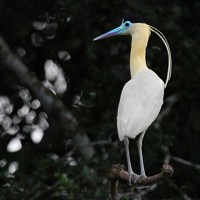 Amazon Rainforest Discovery: By Land & WaterOctober 23 - November 2, 2024
Amazon Rainforest Discovery: By Land & WaterOctober 23 - November 2, 2024 -
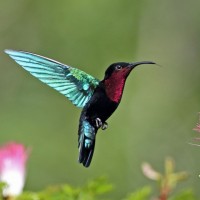 Lesser Antilles Endemics: A 3-Island ClassicDecember 3 - 14, 2024
Lesser Antilles Endemics: A 3-Island ClassicDecember 3 - 14, 2024 -
 Arizona: Sunshine & SaguarosJanuary 12 - 17, 2025
Arizona: Sunshine & SaguarosJanuary 12 - 17, 2025 -
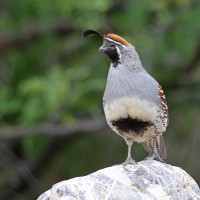 Arizona: Sky Island Winter Birding Pair it with our Sunshine & Saguaros trip!January 18 - 24, 2025
Arizona: Sky Island Winter Birding Pair it with our Sunshine & Saguaros trip!January 18 - 24, 2025 -
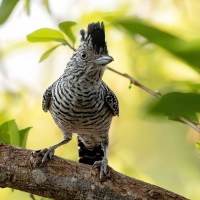 Best of Belize Crooked Tree, Lamanai & Chan ChichFebruary 9 - 17, 2025
Best of Belize Crooked Tree, Lamanai & Chan ChichFebruary 9 - 17, 2025 -
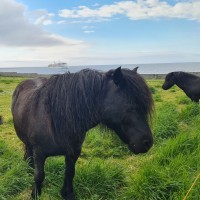 Wild Scotland CruiseMay 18 - 29, 2025
Wild Scotland CruiseMay 18 - 29, 2025
-
Essential Information +
Pace & Protocols +
Packing List +
Suggested Reading List +
Useful Links +
Photo credits: Banners: Zodiac Cruising (Ania Baranek), Puffin (Scott Portelli), Callanish Stones (Scott Portelli) Thumbnails: Northern Gannet (NJ Stock), Atlantic Puffin (NJ Stock), Razorbill (NJ Stock)




